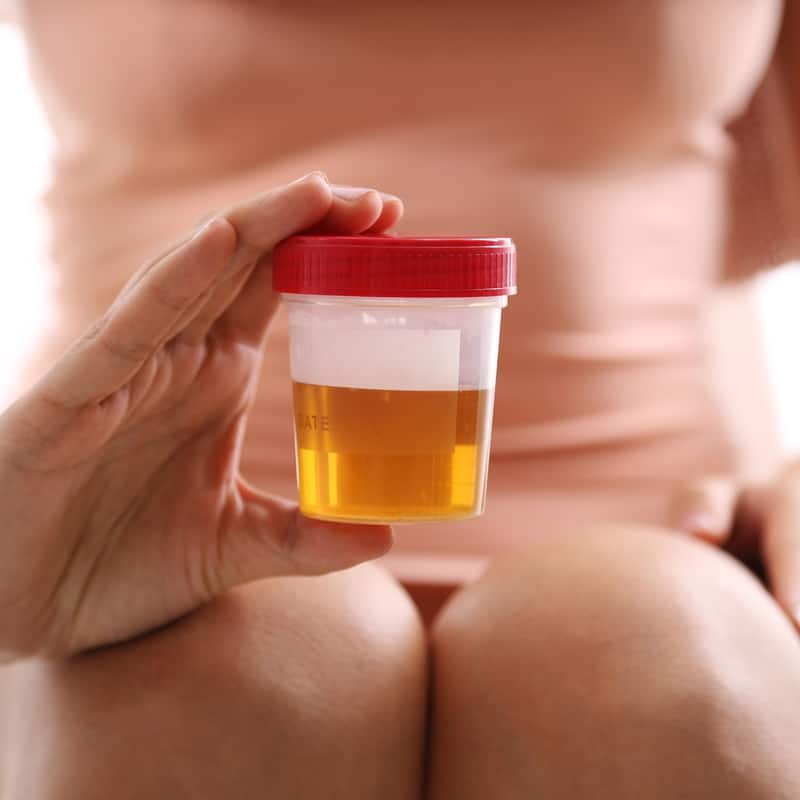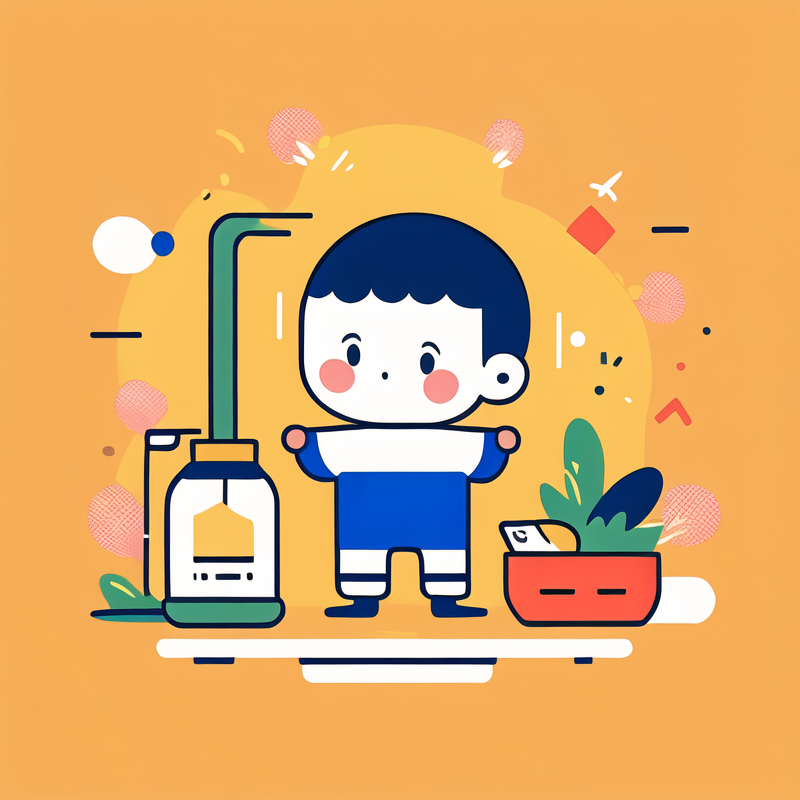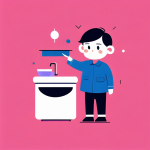Introduction to Toddler Urine Tests
How to make toddler pee for urine test?Collecting urine from toddlers can feel like a daunting task. These little ones are not yet fully able to control their bladder functions or communicate their needs. That’s why having a reliable method that guides caregivers on how to make a toddler pee for a urine test can be invaluable.

Understanding the need for a urine test in toddlers is crucial. Health professionals may require urine samples to diagnose conditions such as urinary tract infections (UTIs), to check for diabetes, or to monitor kidney function. The accuracy of these tests greatly depends on the quality of the sample collected.
Given the unpredictable nature of toddler urination, traditional methods like ‘clean catch’ can be challenging and sometimes unsuccessful. They often lead to contamination, which compromises the sample, not to mention the discomfort and distress they can cause both the child and the caregiver.
That’s where techniques like the Quick-Wee method come in handy. By initiating a natural reflex, this method can make it easier and less stressful to get the needed sample. The Quick-Wee method has the potential to streamline the urine collection process, making it quicker and increasing the chances of obtaining a clean sample.
The aim of this guide is to provide a clear and detailed process for caregivers and healthcare professionals, offering tips to prepare for the urine test, conducting the Quick-Wee method, and handling the samples properly. This way, you can ensure the test’s accuracy and minimize any discomfort for your toddler.
Preparing for the Urine Test: What You Need
Before conducting a urine test for your toddler, preparation is key. You need to gather all the necessary items to ensure a smooth and successful collection process. Here is a checklist of what you will need:
- Clean collection container: Choose a container specifically designed for urine collection to prevent contamination.
- Quick-Wee materials: If you are using the Quick-Wee method, you’ll need gauze and a cold liquid for stimulation.
- Gloves: To maintain hygiene, have disposable gloves ready for whoever is collecting the urine.
- Timer: Keep a timer or watch on hand to track the time, as the Quick-Wee method requires observation for a few minutes.
- Comfortable clothing: Dress your toddler in garments that are easy to remove or have an accessible diaper area, to simplify the process.
- Distractions: Toys or a video can help keep your toddler calm and occupied during the collection process.
- Sanitizing wipes: Have these handy to clean the skin around the diaper area before and after urine collection.
Make sure to familiarize yourself with each step in the method you plan to use. For the Quick-Wee method, understanding the rubbing technique is essential for it to be effective. Lastly, always ensure comfort for both you and the toddler throughout the urine test, to minimize stress and ensure a better outcome.

Understanding Quick-Wee: A Method for Inducing Urination
The Quick-Wee method is a revolutionary approach to help make toddlers pee for urine tests. It is effective, fast, and gentle, addressing the common challenges parents and healthcare professionals face during the urine collection process. Here’s a brief overview of Quick-Wee and how it simplifies the urine collection process.
Quick-Wee uses a natural reflex to induce urination in young children. The technique involves rubbing the lower belly with gauze soaked in cold water. This gentle stimulation of the skin triggers a response that leads to urination. Developed from observing how pre-procedure skin cleaning often resulted in spontaneous urination, Quick-Wee offers a non-invasive alternative to catheters and other more stressful methods.
What makes Quick-Wee remarkable is its basis in medical research and successful trials. A study conducted with 354 infants demonstrated that 31% of the subjects responded within five minutes, a significant increase over the 12% success rate of the standard ‘clean catch’ method. Quick-Wee not only results in faster collection but also reduces the risk of contamination, as there’s less waiting for the toddler to pee.
The ease of application makes Quick-Wee an excellent choice for varied settings. Whether in a hospital, at home, or in resource-limited areas, caregivers can use this method to collect urine samples. It’s simple, can be done with minimal equipment, and tends to be less distressing for both toddlers and adults.
For those curious about the science, Quick-Wee leverages cutaneous voiding reflexes—nerves in the skin that can initiate involuntary urination in young children. Similar reflexes are seen in some animals, and the method takes advantage of these natural responses for medical benefit.
In summary, Quick-Wee is a practical approach that helps how to make a toddler pee for a urine test. It’s less invasive, can increase the speed of collection, and minimizes the likelihood of causing discomfort or stress.
Step-by-Step Process for the Quick-Wee Method
To use the Quick-Wee method to make your toddler pee for a urine test, follow these steps:
- Gather your materials: You’ll need gauze, cold liquid (like water), gloves, a clean collection container, and a timer.
- Prepare your toddler: Make sure they are comfortable and distracted with toys or a video.
- Put on gloves: This ensures hygiene during the collection process.
- Position the collection container: Have it ready under your toddler to catch urine.
- Apply the cold gauze: Soak the gauze in cold liquid and gently rub the lower abdomen in a circular motion.
- Watch the timer: Observe for up to five minutes as the stimulation may induce urination quickly.
- Collect the urine: Once your toddler starts to pee, let the urine flow into the container.
- Store the sample properly: If not testing right away, keep the urine at the right temperature.
The Quick-Wee method helps make toddlers pee for urine tests in a stress-free and efficient manner. It’s less invasive than other techniques and can lead to quicker and more successful urine collection. Remember to maintain a calm environment so your toddler stays relaxed throughout the procedure. With these steps, you’re set for a smoother urine testing process.
Collection Tips for 24 Hour Urine Specimen
Collecting a toddler’s urine sample over a 24-hour period can be a complex task. For accurate results, each drop of urine must be saved. This is usually for tests that track the kidney function over time. Here are some tips to help make this easier:
- Start right after waking up: Have your toddler pee first thing in the morning and then begin the collection. Remember to note the start time.
- Use the right container: Get a clean, large container for storing urine. Hospitals often provide these.
- Keep it cool: Store the urine in a refrigerator or a cooler to prevent bacteria growth.
- Avoid contamination: Make sure only urine goes into the container. Keep it away from feces.
- Plan your day: Set aside a day when you can be at home for this task. It makes collecting urine simpler.
- Label accurately: Write your child’s name and the time range of collection on the container.
- End at the right time: After 24 hours, have your toddler give one more urine sample to complete the process.
- Deliver promptly: Take the container to the lab as soon as possible, or within the time frame given.
Sticking to these guidelines ensures you collect a complete and uncontaminated urine sample. This is vital for precise test results. For any doubts, reach out to healthcare providers. They can offer more personalized advice.

Challenges and Solutions in Toddler Urine Collection
Collecting urine from toddlers is not always easy. Here are some common challenges and how to overcome them:
- Timing Issues: Toddlers pee unpredictably. Use the Quick-Wee method to encourage peeing at the right moment.
- Fear and Anxiety: Toddlers may be scared of the process. Keep them calm with toys or videos for distraction.
- Uncooperative Behavior: Some toddlers won’t stay still. Engage them with a favorite activity to keep them occupied.
- Risk of Contamination: A clean catch is hard. Use a special collection container to minimize this risk.
- Hygiene Concerns: Urine collection can be messy. Wear gloves and clean the area well before and after.
- Proper Storage: Urine must be kept cool. Refrigerate the sample or keep it in a cooler with ice.
- Accurate Timing for 24 Hour Collection: Tracking 24 hours can be confusing. Start after the morning pee and note the time for consistency.
These steps can help solve common issues in collecting urine from toddlers for tests. They make the process smoother for caregivers and less stressful for the toddler.
Storage and Handling of Urine Samples
Once you’ve successfully used the Quick-Wee method or another technique to collect your toddler’s urine sample, proper storage and handling are critical. This ensures that the sample stays uncontaminated and preserves its integrity until testing. Here are some key steps to follow:
- Immediate Storage: Place the urine sample in the refrigerator as soon as possible. Cold temperatures prevent bacteria growth.
- Avoid Delays: Plan to deliver the sample to the lab quickly, usually within 24 hours.
- Seal Properly: Make sure the collection container’s lid is tight. This prevents spills and contamination.
- Label Correctly: Write your child’s full name and collection times clearly on the container.
- Keep it Clean: Don’t touch the inside of the container or lid. This keeps the sample sterile.
- Transport Safely: Use a cooler with ice packs if traveling far to the lab. This maintains the temperature.
Remember, the right storage and handling mean reliable test results. By following these steps, you’re helping ensure your toddler’s health is accurately monitored.
When to Consult a Healthcare Professional
While using the Quick-Wee method can be helpful, it is not always straightforward. Parents and caregivers should know when additional help is needed. Here are instances when you should consult a healthcare professional:
- Persistent difficulty: If you’ve tried the Quick-Wee method several times without success, seek advice.
- Signs of illness: Fever, vomiting, or behavioral changes in your toddler are cues to contact a doctor.
- Uncertain about the process: If you feel unclear on how to collect a urine sample, don’t hesitate to ask for guidance.
Healthcare professionals can offer alternatives, explain the urine tests, and provide support when issues arise. It’s vital to work together to ensure your toddler’s health and comfort during urine tests. A discussion with a doctor or nurse may also ease any concerns you have about the urine test and its results. Remember that the well-being of your child is the top priority, and professional advice is always a valuable resource.


